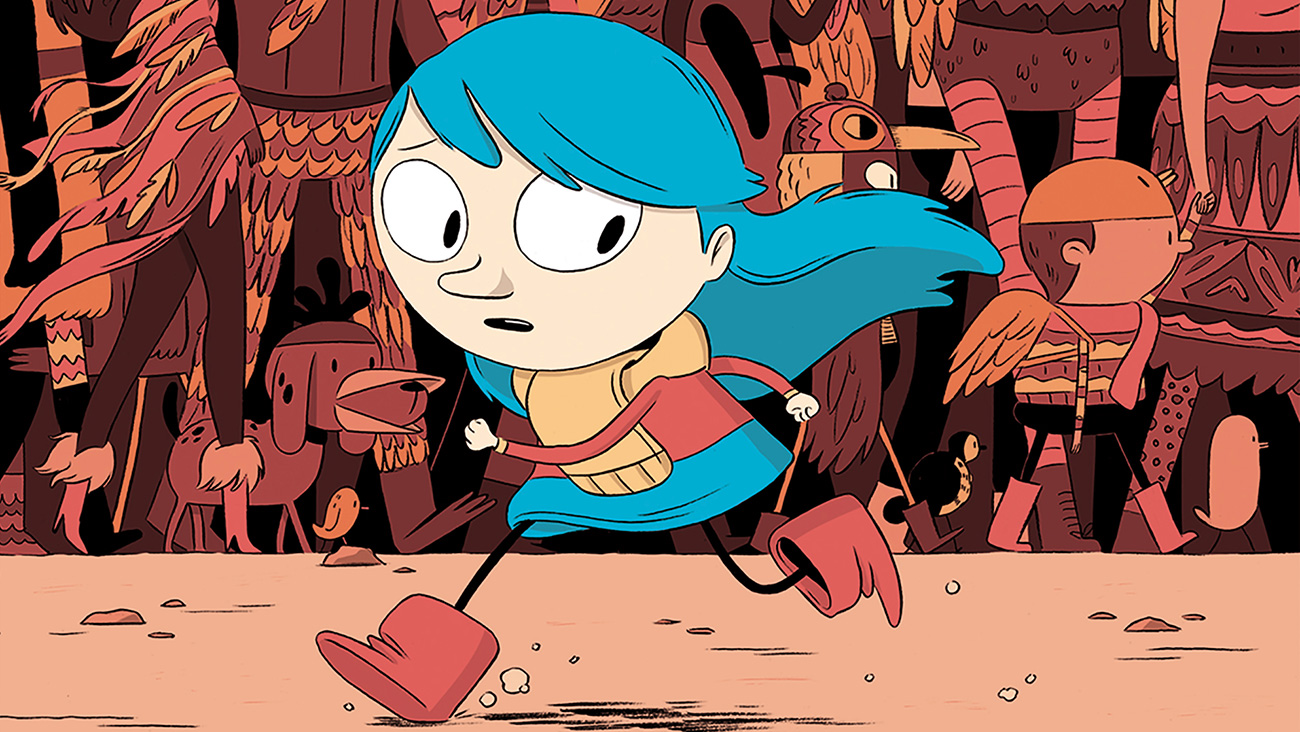Table Of Content

Depending on its personality, a figure's emotions might be muted and wry or explosive and wildly exaggerated. "Even if you're not someone who works in 3D, you can learn a lot by converting your character into three dimensions," says Alexander. It's a key part of the process the students follow at the Pictoplasma Academy. "How to draw Hilda from behind without her hair swallowing her silhouette", how to draw her beret from above; a long and drawn out battle with how her nose should look… these were all issues Pearson had to deal with when creating his character. The technique of exaggeration can be applied to characteristics, too. Anna Mantzaris' hilarious Enough film (above) shows everyday characters in mundane situations, doing the things we've all dreamed of doing on a bad day.
Create clear silhouettes
Props and clothing can help to emphasise character traits and their background. For example, scruffy clothes can be used for poor characters, and lots of diamonds and bling for tasteless rich ones. Accessories can also be more literal extensions of your character's personality, such as a parrot on a pirate's shoulder or a maggot in a ghoul's skull.
Create the right environment
This is what defines the direction of your character, as well as being a useful narrative tool and bringing a feeling of movement. Character designs aimed at young children, for example, are typically designed around basic shapes and bright colours. If you're working for a client, the character's target audience is usually predetermined, as Aussie artist Nathan Jurevicius explains. Cornelia Geppert, CEO of indie games studio Jo-Mei, is a huge fan of The Last Guardian, with its unique aesthetic and great video game character designs. "When I begin a project, I often start with the feeling I want to evoke," he adds. The process begins with the designer taking videos of himself as a reference, trying to capture something of the character idea's movement or posture.
Research other characters
Light colours such as white, blues, pinks and yellows express innocence and purity. Comic-book reds, yellows and blues might go some way to giving hero qualities to a character design. It's also a good idea to look beyond character designs when hunting for inspiration. Although many of the well-known characters from cartoons, advertising and films look straightforward, in actual fact, a vast amount of effort and skill will have been exerted to make them so effective. (To start making your own creations, you'll probably want some software – get Adobe Creative Cloud to get cracking).
Make it personal
Find who you think is the suitable or ideal audience for your work and get feedback specifically from them about it. Having decent software and materials to work with is useful, but not essential, when it comes to bringing your character to life. A lot of amazing characters were successfully designed years ago when no one had personal computers and Photoshop CC was just a dream. "When you know the basics of drawing a face, play with the expression of the character," says Ørum. "Use a mirror to read your own face and notice the subtle changes. Push and pull the eyebrows to show emotion. Avoid giving the face symmetry. The mouth will always favours a side and it gives life to the drawing. And give the head a tilt to add nuance."
99 Best Halloween Costumes of All Time — Top Costume Ideas 2023 - Good Housekeeping
99 Best Halloween Costumes of All Time — Top Costume Ideas 2023.
Posted: Mon, 25 Sep 2023 07:00:00 GMT [source]
Choose colours carefully

"You go back and forth, back and forth and there are creative decisions that also get changed by publisher's feedback." For Flavia, her concepts "never come fully formed." "The ideas come to you in different ways," she says. "Start by creating a large shape and divide it into shorter sections, while thinking about where the hair is parted and where the hairline is. Every line should help to define the volume, shape and direction of the hair." If your character is going to exist within a 3D world, as an animation or even as a toy, working out its height, weight and physical shape is all important.
"The best art is based on personal experiences. People can relate better if it's based on the truth," says Geppert. "It's not a made-up story, even though it's based in a fantastical setting." You can read more about Flavia's creative process as a children's author and illustrator in our interview here. Daily design news, reviews, how-tos and more, as picked by the editors. Question each element of your creation, especially things such as its facial features. The slightest alteration can have a great effect on how your character is perceived.
expert character design tips

Aside from clean lines and easily readable features, there's knowing what to exaggerate and what to minimise, how to give a hint of depth and background and what to do to develop personality. While you can learn a lot from character design books, sometimes it can be daunting to get started, so we asked a range of leading artists and illustrators for their advice on creating memorable, unique character designs. "When starting out on your character design, don’t get caught up in the details," says Pernille Ørum. Exaggerating the defining features of your character design will help it appear larger than life and exaggerated features will also help viewers to identify the character's key qualities.
"I think it's fun with animation that you can push things further, and people will still accept it as real," she says. "With live action it would look absurd. You can also push the emotion further." "Not only will this help your art, but it is a fun activity that I find is a great way of breaking up my day," she adds. "I try to stick to my original drawing style, because the instinct is to try and clean it up," says Laurie Rowan. "I don't like to feel like I've created by characters; I like to feel like I've kind of just encountered them." In the Character Design Crash Course workshop at Pictoplasma 2019, Jurevicius and Rilla Alexander asked attendees to sketch their character in poses held by other attendees, life drawing style.
"A lot of my commercial project come out of my personal work. That's why I try to make my personal work so honest to what I like. I think it comes through to the viewer that I'm not just ticking boxes," says John Bond. The illustrator launched his debut picture book, NOT LOST, based on his Mini Rabbit character design. Whether you're creating a monkey, robot or monster, you can guarantee there are going to be a hundred other similar creations out there. Your character design needs to be strong and interesting in a visual sense to get people's attention. As well as knowing when to exaggerate, Ørum is also keen to highlight the importance of simplicity. One key aspect to consider when creating a character design is the line of action.
The world in which the character lives and interacts should in some way make sense to who the character is and what it gets up to. Depending on what you have planned for your character design, you might need to work out what it will look like from all angles. A seemingly flat character can take on a whole new persona when seen from the side if, for example, it has a massive beer belly. Geppert's Sea of Solitude video game is an exploration of her experiences of loneliness. Intensely personal though it may be, the game hit a chord with audiences because it deals with an experience that is so universal yet still strangely taboo.
It's also worth considering the balance between stretch and compression. "Even a neutral pose can lead the eye by applying these two approaches, resulting in an effective character design," says Ørum. At one point one of her team members had to say to her that their Sea of Solitude design was looking a little too similar to The Last Guardian. She looked back at her initial artworks, and it brought back the feeling she had when creating them.

No comments:
Post a Comment